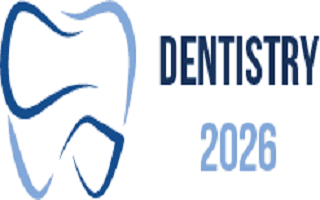Dentistry 2026

The International University of Rabat, Morocco
Abstract:
An unconventional protocol was published in 2009 in which implants were deliberately placed in contact with dental tissues other than the bone. The primary goal was to avoid an invasive surgery when an impacted tooth was found on the way of a planned implant.
The protocol violated the implicit paradigm of osseointegration that insist on placing implants only in contact with bone.
When impacted teeth are asymptomatic, surgical removal might not be necessary. Sometimes, however, patients seek rehabilitation of the site, eg, when the primary canine is lost, and the presence of the impacted tooth must be dealt with. Treatment usually requires that either the canine be moved orthodontically to the ridge, when feasible, or the impacted tooth be surgically removed before an implant is placed. In both cases, the treatment is usually lengthy and associated with high treatment costs. When surgical removal is contemplated, implant placement is performed after completion of bone healing.
While comparing the data in the articles we studied, no postoperative pain was recorded, and the postoperative healing was considered generally uneventful. Many results show Clinical stability at the end of the 3- to 6-month integration period. The integration periods were not significantly altered, and healing was uneventful for all implants.
The insertion of implants through impacted teeth and the creation of interfaces other than the implant-bone interface resulted in the healing of hard tissue and did not endanger the implant stability.
Thus, five new interfaces are created when implants are brought in contact with an impacted tooth; they are: the implant-periodontal ligament interface, the implant-cement interface, the implant-dentine interface, the implant-pulp interface and the implant-enamel interface.
Biography:
Dr. Soukaina Abidi is a distinguished academic and researcher affiliated with the International University of Rabat (UIR), Morocco. With a strong passion for innovation and education, Dr. Abidi has contributed significantly to her field through research, publications, and collaborations.
